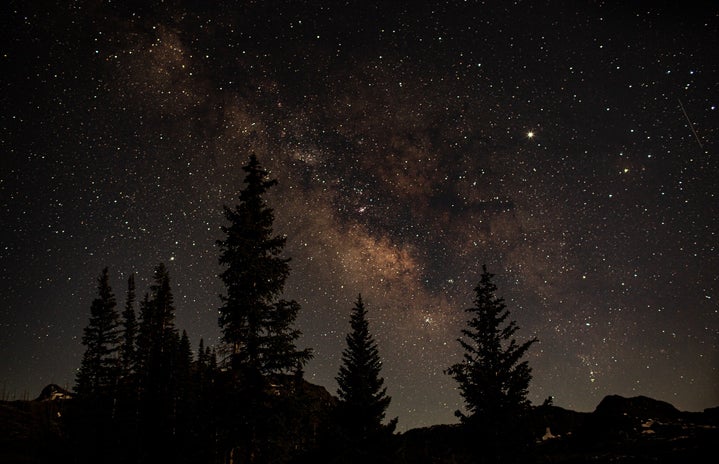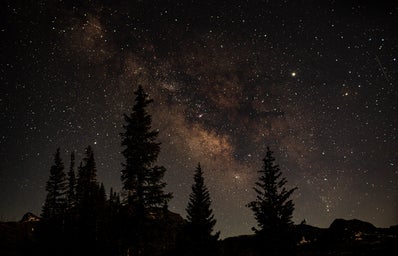The acronym LGBTQ2S+ contains a myriad of terms to describe both sexual and gender identity. While each term is important to understand, there is more misunderstanding surrounding the “2S”, or Two-Spirit, identity.
What Does Two-Spirit Mean?
Two-Spirit is an umbrella term to describe someone of Indigenous descent that does not conform to one gender identity. This term should not be used unless you are a member of the Indigenous community. Each nation has its own word for Two-Spirit in their language, and while there are close to 300 Indigenous languages between Canada and the USA, each word has loosely the same translation, like ayahkwêw (the Cree Nation), which roughly translates to “man accepted as a woman” or agokwa (the Ojibwa/Chippewa Nation) which roughly translates to “man-woman.” Though these definitions sound blunt, none are said or meant negatively. Some nations have different words for both those who were “female-bodied” (assigned female at birth) and those who were “male-bodied” (assigned male at birth). The term Two-Spirit was first coined in 1990 at the 3rd annual Native American and Canadian Aboriginal LGBT People Gathering in Winnipeg. They wanted a term to reflect both the masculine and feminine side of their community while calling upon how the Indigenous communities used to live pre-contact (before colonization).
What Roles Do Two-Spirit People Have?
The roles of Two-Spirit people in their communities are different in each tribe. Overall, they are highly respected and have a lot of spiritual and political importance within the community. Their unique roles in the community reflect the uniqueness of their identity. In a webinar, Two-Spirit Identity: Then and Now, given by Harlan Pruden and Beverly Gorman (through the IHS), Pruden (a First Nations Cree), talks about how in Cree tradition, Two-Spirit people are often mediators. A Two-Spirit person is the only one allowed in both male and female camps and often served as mediators between the two. They are often allowed into war parties — traditionally a male role— even if they were assigned female at birth.
Pre-Contact (Before Colonization)
Before Europeans arrived in North America and forced Indigenous communities to assimilate into their culture, most communities did not have any words to describe sexual identity. They mainly looked at gender through the roles that individuals were drawn towards, called “gender analysis” by Pruden. Same-sex partnerships existed between two women and two men, one of them being Two-Spirit or using the more traditional definition, one partner taking on the roles of the “opposite” gender. In some communities, being Two-Spirit was considered a third gender, and some even differentiated between “female-bodied” and “male-bodied”— making four distinct genders in their community.
Through surveys, Harlan discovered that Indigenous communities worldwide (not just in North America) seem to have a similar idea of what Two-Spirit means to them. However, they also have different words for it in their language.
Post-Contact (After Colonization)
When colonizers arrived, they were confused by the sight of Two-Spirit people, who would often wear both traditionally female and traditionally male clothing. They created the word “berdache,” which has a very offensive and homophobic meaning. This word, along with European homophobia, made its way into the Indigenous way of life.
With the creation of Reservations through the Indian Appropriations Act (1851), the colonizers began to control the Indigenous and Two-Spirit communities. They began to force Two-Spirit people to dress as the gender they were assigned at birth, and if they failed to comply, they would kill them, sometimes even feeding them to dogs. Many Two-Spirit people were forced to deny who they were to survive.
In the 1870s, the Catholic Church and Canadian Government created Residential Schools in order to forcefully assimilate the Indigenous communities into the colonizer’s way of life. These institutions forced heteronormativity onto the Indigenous communities and enforced strict female/male gender roles.
Both these major injustices contributed to the creation and elongation of homophobia in Indigenous communities where none previously existed. This forced assimilation caused the loss of Two-Spirit roles and stories, with many Indigenous communities forgetting all their history. Pruden explained how the historical trauma the Indigenous communities had to face has trickled down into each new generation, causing intergenerational trauma and the continuation of this taught homophobia.
In recent years, the Indigenous communities have begun to reclaim their culture, and both Pruden and Gorman believe that Two-Spirit individuals are necessary in order to do this.
Here are some websites for a few prominent Two-Spirit people:
Here are a few articles to further understand the use of Two-Spirit:
Two-Spirit: The Trials and Tribulations of Gender Identity in the 21st Century
A Letter to White People Using the Term “Two-Spirit”
References:
https://www.outsaskatoon.ca/two_spirit1
https://www.ihs.gov/lgbt/health/twospirit/
https://rainbowresourcecentre.org/files/16-08-Two-Spirit.pdf
https://www.conspireforchange.org/a-letter-to-white-people-using-the-term-two-spirit/


